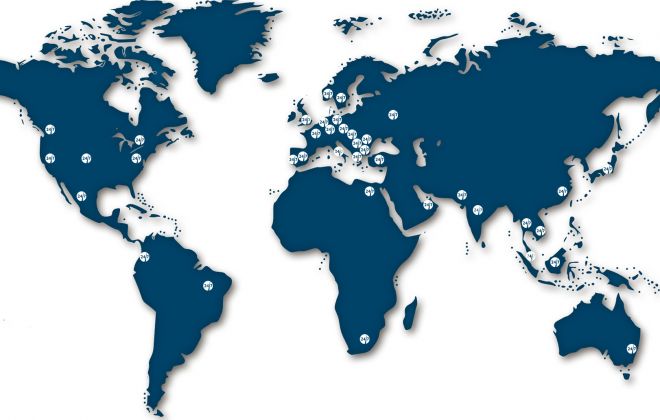International User Research Agency

We deliver international User Research using our own global team of Senior UX Research Consultants
We help some of the worlds most respected brands deliver User Research in the international markets they are operating in or targeting. We operate through our own team of Senior UX Researchers. So whether you ask us to deliver user research in one market or multiple markets, you will deal with one team.
Do you have an International User Research requirement? Share your brief for single or multi-market user research with us, and we will provide a free no-obligation proposal.
We help our customers:
Enter new markets
Understand the online behavior behind their analytics
Optimize their international presence
Evaluate new products
We can operate as your user research team or work with your existing user research team supporting you in the markets where you don’t have capability.
We provide international user experience services in a wide range of countries, languages, cultures and technologies. As a result we are able to offer our clients consistent and high quality deliverables, a single point of international programme management and more competitive pricing.
Scaling a business and growth into new markets has inevitably included global movement; breaking into new geographical regions and countries was a sure-fire way of selling more of what you know to vast, untapped markets.
However, moving from a market you know inside out into unknown territory brings a whole host of new challenges. Detecting and diverting those problems, ensuring your brand doesn’t step on the toes of the locals, and providing them with precisely what they need from day one, requires a great deal of sensitivity, exploration, understanding, and application.
International user experience can make or break geographical scaling opportunities. Ensuring the best possible success in a new market means examining all the details of the culture, how its users think, act, and feel, and what will make their relationship with your brand, website, and app a happy and fruitful one.
Internationalising and localising apps and websites
Throughout America, despite rising vegan trends, the beef burger is not only a staple dietary commodity but a trademark of the culture. In India, however, the cow is sacred, and half the population are committed vegetarians. That doesn’t mean that a burger franchise can’t succeed there; they just need to understand their new clientele and develop a suitable menu. Breaking the market would need a deeper understanding of not just an alternative religious and philosophical culture but also the local and national dietary habits, tastes, and dining trends.
Dietary differences seem relatively obvious, but would you have automatically examined the psychology of colour use in a new chosen culture? In China, for example, the colour red suggests luck and fortune; in most of the western world, it suggests danger, a warning, or an emergency. Those are very different messages for your brand style to represent.
International user testing examines how your process and presentation sit with real users in the countries and cultures who will make or break your business.
- Cultural differences and usage habits in a target market
- Language – translations and display
- Correct conventions and currencies, units, dates, times, and name and address formats
- Time and calendar differences
- Legal requirements
- Technical issues
International user research
Let’s say you buy a holiday property in Spain or have family who has recently relocated to Switzerland or Austria for work or to retire. When visiting websites to purchase the supplies you need or to track down the perfect birthday and Christmas gifts, how will you navigate your way around those sites and apps without speaking the language? Even when the site or app has options to switch languages, how much of that information is what you’re used to seeing or is lost in translation?
Businesses carry out international user testing for numerous reasons:
- Testing early stage prototypes before full-scale development.
- Identifying the needs and frustrations of international and local customers.
- Uncovering country and culture-specific differences, viewpoints, and terminology that could be offensive, confusing, or damaging.
- Creating familiar online environments to encourage a gratifying experience, encouraging users to interact, engage, and spend.
- Meeting global users’ needs and expectations with cross-cultural UX design.
- Examining technological differences that affect performance in different regions.
International user testing uncovers how various markets and operators act in an environment they expect to recognize and easily adapt to. It exposes the hurdles and stumbling blocks locals and international visitors will experience, hindering their progress and understanding. Perfecting your international UX experience prevents early exits, dropped sales, and long-term damage to an established brand.
Localisation of user research
Localization testing considers how transposing your current website or app will sit with users of a different global audience. Changes need to be both cultural and technological to satisfy the demands of your process in another country.
- Simplifying graphics, imagery, and presentation for immediate delivery in low-tech environments.
- Browser and technology compatibility.
- Perception of the product and brand.
- Creation of content in a recognized, comfortable, and familiar format.
- Information density differences from culture to culture.
- The tone of voice.
- Layout and visual hierarchy and information architecture.
- Use of culturally appropriate graphics, visuals, colors, and icons, including animals, symbols, places, and objects.
- Call-to-action buttons using local and regional conventions.
- Adaption to local experience for international users.
- Does language read left-to-right or right-to-left? And will users swipe left or right to go back a page?
How UX technology influences the success of your global operations
In the western world, we’re fortunate to experience affordable, high-quality Internet connections, but how will your website or app function where the tech isn’t so great? Those stunning videos and hi-resolution product tours, however beautifully they represent each item or action, are far less likely to convert if they slow the website down to an unusable or frustratingly slow speed.
- Ensure usability in all markets.
- Interfaces are easy to navigate at first glance.
- Don’t lose market share by failing to meet compatibility with local Internet conventions, browsers, and networks.
- Adapt user input for different conventions with form fields and payment gateways.
- Use culturally preferred icons, symbols, and colors while maintaining brand identity.
- Consider text layout, direction, special characters, fonts, and additional space for translations that use far more characters and words.
- Mobile optimization and automatic layout changes ensure templates work in each environment.
- Creating compelling copy in different languages, suitable for cross-culture delivery.
The importance of international user research
International user research is a vast field, ensuring that breaking a new market will reap the rewards of your investment without upsetting the locals or existing brand supporters.
Understanding what it takes to provide a safe, encouraging, and enjoyable experience, from the landing page to completing the transaction, is better delivered by experts in the UX field matched with test subjects of the country.
Learn More
International User Research eGuide
This guide is about carrying out qualitative and quantitative UX research in countries, regions and territories other than our own.
International Team
We deliver user experience services both internationally and for international clients using our growing team of Accredited Practitioners.










